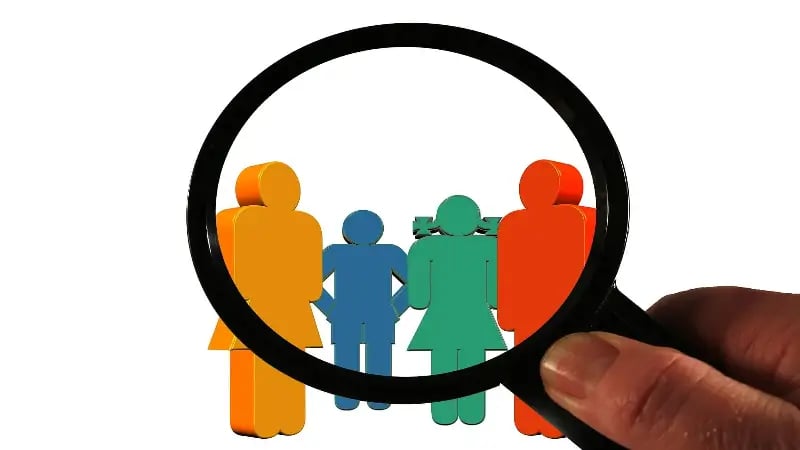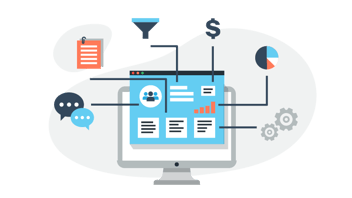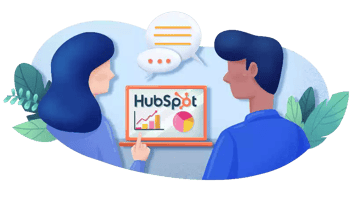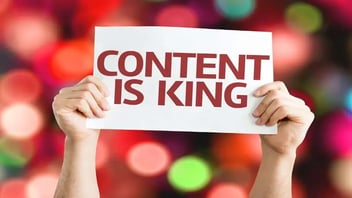Generați mai mulți clienți cu pâlnia de conversie
Există șanse ca elementele unei pâlnii de conversie să nu fie noi pentru dvs., iar semnificația lor este bine cunoscută. Ca atare, ar trebui să știți că este vital să îmbunătățiți generarea de lead-uri prin transformarea cu succes a mai multor lead-uri potențiale în cumpărători activi.
Cu toate acestea, este esențial să nu neglijați situația în care vizitatorii nu reușesc să treacă la următoarea etapă a pâlniei. Acesta este un moment în care trebuie să vă angajați în introspecție și să abordați direct întrebările dificile: De ce decid acești vizitatori să se dezangajeze? Cum pot pune în aplicare strategii pentru a-i reangaja și a-i atrage înapoi?

De ce aleg să plece?
O pâlnie nu are găuri. Tot ce intră în partea de sus a pâlniei ajunge la fund. O sită are găuri; se pierde o parte din ceea ce se toarnă înăuntru. Modalitatea tehnică de a face referire la acest lucru este atriția. O rată de uzură este proporția de persoane care pleacă fără a ajunge la baza pâlniei. Aproape fiecare pâlnie de conversie pierde oameni. Uneori, acest lucru se datorează faptului că firma dvs. nu este potrivită. Dar în alte cazuri, uzura se datorează unor factori pe care îi putem rezolva:
Neoferirea pasului următor.
Este esențial ca în fiecare etapă a parcursului cumpărătorului să oferiți continuu mai multe informații pentru a-i împinge mai departe în pâlnie. Nu vă așteptați niciodată ca vizitatorii dvs. să fie proactivi. De exemplu, dacă vizitatorii urmăresc un link de pe rețelele sociale către o parte din conținutul dumneavoastră, este posibil să nu dorească să parcurgă alte secțiuni ale site-ului. În timp ce îi aveți pe site, dezvoltați oferte pentru produse conexe. Oferiți-le întotdeauna un loc pe care să îl viziteze în continuare.
Nu comunicați beneficiile.
Puteți detalia zile întregi ce oferă produsul sau serviciul dumneavoastră, dar trebuie să vorbiți despre beneficiile pe care le poate oferi. Cum rezolvă afacerea dvs. problema unui cumpărător? Mai simplu spus, cum poate îmbunătăți viața unui client? Acest lucru este foarte important în timpul etapei de interes și dorință, în care mulți dintre clienții dvs. potențiali vor dispărea dacă nu le furnizați informațiile corecte.
Nu utilizați CTA-uri puternice.
Apelurile la acțiuni sunt benefice atunci când convertiți clienții potențiali în cumpărători. Există mai multe CTA-uri diferite pentru fiecare etapă a pâlniei de conversie. Este o idee bună să fiți foarte clar și concis cu acțiunile dorite pe care ar trebui să le întreprindă utilizatorul. Asigurați-vă că utilizați butoane viu colorate și un limbaj robust și succint.
Având un proces complicat de acțiune finală.
Țineți cont de procesul dvs. de înscriere, verificare și abonare. Procesul dvs. este lung de câteva pagini? Cereți prea multe informații? Ar fi util dacă ați face procesul final de cumpărare cât mai puțin dureros posibil pentru un client. Cel mai rău este atunci când ați ajuns atât de departe cu un client potențial, iar acesta decide să vă părăsească compania pentru că ați avut un proces de achiziție finală foarte complicat. Păstrați-vă pagina de acțiune clară, concisă și ușor de utilizat.
Ce puteți face pentru a-i aduce înapoi?
Este ușor să te concentrezi pe aducerea de noi vizitatori pe site-ul tău. Dar nu uitați că vizitatorii care revin au fost deja expuși brandului dvs., ceea ce face ca această audiență să fie mai ușor de convertit în cumpărători. Depinde de dvs. să utilizați cele mai bune instrumente și practici pentru a readuce vizitatorii. Vizitatorii care revin sunt esențiali pentru site-ul dvs. deoarece arată cine sunt clienții dvs. fideli, cât de puternică este cunoașterea mărcii dvs. și cât de reușite sunt campaniile dvs. de marketing. De obicei, vizitatorii care revin au o șansă mai mare de a cumpăra decât vizitatorii noi. Acest lucru este important deoarece vă puteți aștepta la un randament mai mare al investițiilor în campaniile dvs.
Există multe modalități de a aduce vizitatori pe site-ul dvs., de la reangajarea cu publicul dvs. la retargetarea anunțurilor PPC la formularele pop-up. Este întotdeauna înțelept să includeți aceste sfaturi valoroase pentru a vă readuce vizitatorii și a-i converti în cumpărători.
Retargetingul anunțurilor
Retargeting-ul implică afișarea de anunțuri unui utilizator care a vizitat site-ul dvs. web, a interacționat cu postările dvs. din social media, a vizionat un videoclip sau a interacționat cu marca dvs. Construirea de reclame strategice de retargetare prin Google, LinkedIn sau Facebook este o idee strălucită. Aceste site-uri funcționează prin urmărirea cookie-urilor pentru a afișa anunțuri. De exemplu, atunci când un utilizator intră pe site-ul dumneavoastră, un cookie este plasat în browserul său web. Codul de urmărire pentru aceste module cookie afișează reclame de retargetare bazate pe comportamentul vizitatorului. Nu uitați, principalul scop al anunțurilor de retargetare este să le reamintiți vizitatorilor dvs. să revină pe site-ul dvs. pentru a le oferi o soluție la problemele lor.
Prezentați produsele de care publicul dvs. este interesat.
Multe site-uri web utilizează re-marketingul dinamic pentru a atrage vizitatorii direct înapoi pe site-urile lor. Re-comercializarea dinamică este o funcție care creează automat anunțuri care prezintă principalele produse căutate de un vizitator în timpul ultimei sale vizite pe site-ul dvs. Această formă de retargetare este extrem de eficientă, amintindu-leutilizatorilor cât de mult le-a plăcut un produs, determinându-i să revină și, sperăm, transformându-i în clienți.
Stimulați vizitatorii prin crearea unui sentiment de urgență.
Comercianții creativi folosesc teama de a pierde (FOMO) pentru a readuce un vizitator pe site-ul lor. Aceștia pot utiliza tactici precum "oferte de ultim moment" sau "grăbiți-vă înainte de expirarea stocurilor". Această tactică face minuni pentru ratele de click-through și ratele de conversie. Cea mai bună modalitate de a insufla FOMO înpubliculdvs. de retargetingeste să utilizați personalizatori de anunțuri. Unele dintre acestea vor fi fragmente scurte de cod care inserează numărători inverse în anunțurile dvs., împingând urgent un vizitator să cumpere.
Oferiți coduri de reducere și cupoane.
Un client care v-a vizitat deja site-ul, a cercetat produsul dvs. și l-a comparat cu alte site-uri este un exemplu de client care "a făcut cumpărături". Acest potențial client care a dat peste site-ul dvs. a apreciat ceea ce oferiți, dar a decis să nu meargă până la capăt cu achiziția, existând site-ul dvs. cu totul. Odată ce au părăsit site-ul dvs., poate fi greu să îi aduceți înapoi, deoarece pot găsi o ofertă mai bună. Uneori este nevoie doar de o reducere sau o ofertă specială pentru a trezi din nou interesul pentru brandul dvs. Puteți plasa aceste oferte pe Facebook pentru a atrage un vizitator să revină și să reconsidere o achiziție.
Formulare pop-up
Formularele pop-up pot fi vitale pentru retargetare și menținerea publicului pe site-ul dvs. web. Acestea atrag un vizitator să continue să învețe, să descarce ceva, să achiziționeze un produs etc. Formularele pop-up sunt utilizate pe site-urile web; ele apar brusc și vă forțează să luați măsuri. Fie faceți clic pe anulare, fie continuați cu clickbait-ul.
Exemple de ferestre pop-up
Deși pop-up-urile pot fi enervante, alegeți forma cea mai puțin agresivă pentru a solicita atenție și acțiune:
-
Intrarea în pagină: Apar atunci când un vizitator ajunge pentru prima dată pe pagina dvs.
-
Derularea paginii: Apare atunci când vizitatorul defilează prin pagină
-
Interacțiune element: Apare atunci când vizitatorul face clic pe un anumit conținut sau îl trece cu mouse-ul
-
Timp pe pagină: Apare atunci când vizitatorul petrece o anumită perioadă de timp pe o pagină
-
Intenția de ieșire: Apare atunci când vizitatorul defilează spre partea de sus a paginii pentru a pleca
- Inactivitate: Apare atunci când vizitatorul nu a întreprins nicio acțiune pe site de mult timp
Oferiți ceva relevant și valoros
Principala problemă a pop-up-urilor este împiedicarea experienței vizitatorilor pe site-ul dvs. web. Acest lucru se datorează faptului că ceea ce este oferit în pop-up nu este valoros pentru vizitator sau este irelevant pentru pagină. Încercați să alegeți pop-up-uri care vor spori implicarea, mai degrabă decât să o întrerupă. Acest lucru creează o experiență mai bună pentru un vizitator pe site-ul dvs. Asigurați-vă că creați un pop-up valoros și relevant pentru vizitatorul dvs. De exemplu, puteți crea un pop-up care oferă un cod promoțional sau o reducere înainte ca vizitatorul să încerce să părăsească site-ul dvs.
Acordați atenție modului în care oamenii interacționează cu paginile dvs.
Gândiți-vă strategic la momentul apariției pop-up-urilor dvs. Cea mai bună modalitate de a vă da seama când să plasați un pop-up este să examinați modul în care vizitatorii interacționează cu fiecare dintre paginile de pe site-ul dvs. Acordați atenție ratei de respingere și timpului mediu petrecut pe o pagină pentru a înțelege cum interacționează vizitatorii cu paginile. Fă-ți un obicei din a vedea exact unde fac clic și defilează vizitatorii tăi. Aceste sfaturi vă vor ajuta să înțelegeți mai bine modul în care oamenii interacționează cu conținutul dvs.
Utilizați un limbaj specific, aplicabil și uman
Acesta este aspectul esențial al pop-up-urilor și, fără îndoială, aspectul esențial. Este foarte important să specificați exact ce vor primi vizitatorii dacă dau clic pe un pop-up. Fiți foarte specific în formularea dvs. - nu dansați în jurul a ceea ce vor primi. Asigurați-vă că este foarte clar pentru vizitator. Permiteți vizitatorilor dvs. să acționeze. Lăsați vizitatorii să știe exact ce doriți să facă, obligându-i să acționeze. Cel mai important, păreți umani. Pop-up-urile dvs. ar trebui să fie o primire călduroasă pentru vizitatorul unui site web. Dacă puteți, folosiți un limbaj conversațional pentru a vă conecta cu vizitatorii dvs.
Pâlnia dvs. de conversie nu va fi niciodată perfectă. Cea mai importantă sarcină a dvs. ar trebui să fie convertirea clienților potențiali în cumpărători de-a lungul pâlniei de conversie. Cu toate acestea, este esențial să abordați motivul pentru care anumiți clienți potențiali nu trec la următoarea etapă a pâlniei de conversie. Acestea fiind spuse, utilizați retargeting-ul publicitar și formularele pop-up. Este esențial să vă reangajați cu un fost vizitator al site-ului dvs. web. Este mai ușor să convertiți un fost vizitator într-un cumpărător decât un vizitator nou care nu a văzut niciodată serviciul sau produsul dumneavoastră.
Acest conținut este disponibil și în:
- Germană: Mehr Leads generieren: Die Kraft des Konversionstrichters freisetzen
- Engleză: Generate More Leads: Unlocking the Power of the Conversion Funnel
- Spaniolă: Embudo: Más leads, más ventas
- Franceză: L'entonnoir de conversion : Générer plus de prospects
- Italiană: Generare più lead: liberare il potere dell'imbuto di conversione
- Chineză: 产生更多潜在客户:释放转化漏斗的力量









Lasă un comentariu cu părerea ta.